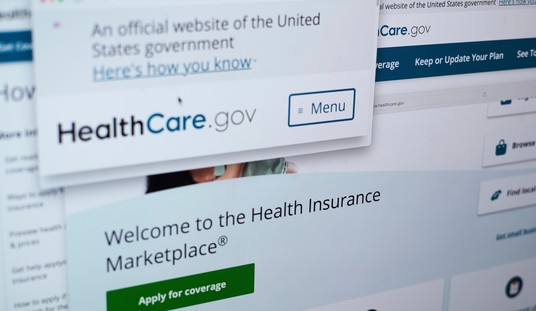First, the good news: The Congressional midterms, gubernatorial races, and various state and local electoral contests resulted in the large-scale, unmistakable repudiation of the political tax-and-spend culture that so many of us were hoping for.
Now for the bad news: The distance between where we are and a genuine long-term national fiscal and economic recovery is daunting. This is no time for disengagement.
Many Americans have begun to recognize just how deep the short-term and long-term financial holes we face really are. Others, sadly including many politicians who won key races last week and their party overlords, still don’t seem to get it.
The near-term situation is scary enough, and needs to be stabilized soon, or, as I said a month ago, there won’t be a long-term. But even if we satisfactorily resolve the short-term, the long-term problems we face are intimidating at levels most people have only begun to absorb.
Focusing on the short-term for a bit: Fiscal 2010, which ended on September 30, was the second time the U.S. government ran an annual deficit of well over $1 trillion. Fiscal 2009 was the first. As I noted two weeks ago, this year’s real spending deficit was worse than the first. Some departments went hog-wild. Spending at the Department of Education was up 30%. Spending increases at the Energy Department and the EPA (36%) were ridiculous. I could go on and on.
Federal collections on the whole came in barely higher than a year earlier, and were still about 20% lower than fiscal 2008 before subtracting IRS stimulus payments. Tax collections in most categories were down. The only reason receipts increased was that collections from the Federal Reserve increased by $42 billion.
Federal Reserve collections … what’s that all about? It’s about Ben Bernanke performing the 21st century’s equivalent of printing money. The Fed calls it “Quantitative Easing” (QE).
Properly employed, QE can be a stabilizing mechanism to keep an economy from nose-diving and assist it as it recovers. The Fed creates money out of nothing and invests it in government bonds, mortgage-backed securities, and corporate bonds for a while. It is supposed to wind down those investments when condition warrant.
The trouble is that conditions don’t warrant pulling back, because a) there hasn’t been a meaningful recovery, and b) fiscal policy is a scandalous mess. What little economic improvement has occurred has not been enough to put people back to work. Unemployment has been stuck at over 9% for the longest period since the Great Depression.
Because of the deficits created by fiscal policy and the weak recovery that has accompanied it, the Fed can’t pull back on QE without significantly disrupting the economy. We can argue all day and night about whether the pullback should happen, but the fact is that at least for now Bernanke & Co. are determined not to let it happen, even as the administration continues to push for more historically ineffective stimulus and continued trillion-dollar deficits. The Fed has embarked on “QE2,” a second round of quantitative easing that will increase the Fed’s investment portfolio by another $600 billion.
The deeper the QE hole, the harder it will be to dig out, and the worse the consequences will be if — hopefully we catch it in time before it becomes “when” — the American people and foreign governments (not necessarily in that order) come to realize that the house of cards is unsustainable. That’s why government spending must be slashed and the government’s budget must be brought into balance — and soon.
But even if that occurs, there are serious long-term problems. They come in four major areas:
• Social Security
• Medicare, Medicaid and Health Care
• Military
• All other spending
Social Security’s actuarial deficit was over $7.6 trillion a year ago. The actuarial deficit in Medicare alone is five times as large. As the Baby Boomers continue to retire and age in record numbers, both numbers are moving higher — and quickly.
Sadly, projected spending in the first two categories above threatens to totally wipe out the government’s ability to spend any money in the other two, even though they happen to be the areas where the specifically defined constitutional duties of the federal government (defense, courts, etc.) are carried out.
Today, the PJ Institute, the research and education arm of Pajamas Media, is introducing the National Economic Rescue Initiative (NERI) to the American people. While its timing in the euphoria of the Tea Party wave that has swept the nation is perfect, its overall warning is stark, sobering, and demands action:
Because of decades of overspending by both Democrats and Republicans, our nation will reach a time (possibly around 2020 or sooner) when we can no longer borrow to finance our annual trillion dollar deficit.
If lenders are no longer willing to buy our debt, we will be unable to continue to fund the government’s operations through borrowing. If spending is not drastically cut, Americans will need to pay taxes at much, much higher levels.
What needs to be done to prevent this will involve much more than a little tweaking. It will require a wholesale rethink of what the government is capable of doing and should be doing — and conversely, what individuals, families, and communities are capable of doing better, and should be doing themselves.
The Congressional Budget Office projects that if we continue on our current course, federal debt owed to the public will increase from $9 trillion today to about $550 trillion a mere 70 years from now — and that’s after inflation, while assuming (many believe naively) that the government will be able to continue to borrow at low, risk-free rates.
We’re not kidding. But if 70 years sounds too far off to be believable, how about these intermediate threshold crossings: $20 trillion in 2022, twelve years from now; $40 trillion in 2032, just ten years later; or $100 trillion in 2046? Keep in mind that our current Gross Domestic Product in current dollars is about $14.7 trillion.
Nobody can possibly believe that our current financial path is sustainable.
This is where those reading this column and the American people come into play. Please, go to the NERI web site and educate yourself. Utilize its tools, and then visit its interactive Solutions Design Center.
If it hasn’t become obvious to readers during the past several years, let’s make it obvious now: The time for the American people to assume that the country’s problems can be solved with minimal citizen involvement has ended. Additionally — and this will be addressed in future NERI subscription-based offerings designed to be extremely beneficial yet very affordable — the idea that people can just “wing it” in their own personal money management, retirement savings, and overall financial planning, or play catchup after years of neglect, is similarly over.
This nation does not have the luxury of blowing this off. Failing to deal with the problem while there is still time will condemn future generations to a standard of living which will be a mere shadow of ours, and which will ultimately threaten our form of government, i.e., whether we will continue to genuinely have government of the people, by the people, for the people.
So go there. Take action. Make suggestions. Encourage others to do the same.
The country you help save will be your own.









Join the conversation as a VIP Member